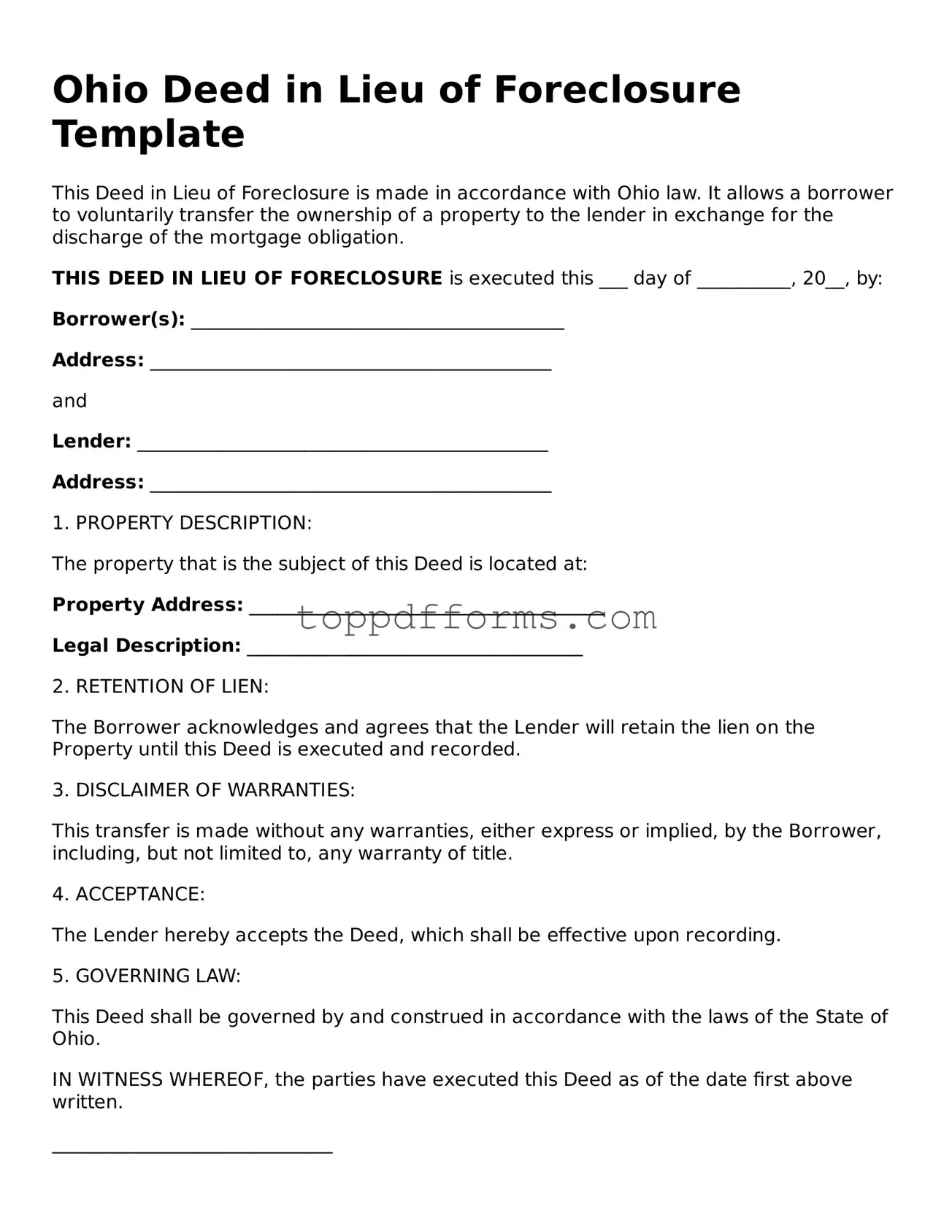What is a Deed in Lieu of Foreclosure?
A Deed in Lieu of Foreclosure is a legal process that allows a homeowner to voluntarily transfer ownership of their property to the lender to avoid foreclosure. This option can be beneficial for both parties. The homeowner can relieve themselves of mortgage debt, while the lender can avoid the lengthy and costly foreclosure process.
Who is eligible for a Deed in Lieu of Foreclosure in Ohio?
Eligibility for a Deed in Lieu of Foreclosure typically requires that the homeowner is facing financial difficulties and unable to continue making mortgage payments. Additionally, the property must be free of other liens, or the lender must agree to accept the property with existing liens. Lenders often review the homeowner's financial situation to determine eligibility.
What are the benefits of choosing a Deed in Lieu of Foreclosure?
There are several advantages to opting for a Deed in Lieu of Foreclosure. First, it can help homeowners avoid the negative impact of a foreclosure on their credit score, which can be significant. Second, the process is generally faster and less expensive than foreclosure. Lastly, some lenders may offer relocation assistance or forgiveness of remaining debt after the transfer, providing additional relief to the homeowner.
What steps should a homeowner take to initiate a Deed in Lieu of Foreclosure?
To initiate the process, a homeowner should first contact their lender to discuss their financial situation. It’s important to gather necessary documents, such as financial statements and proof of hardship. The lender will then review the request and may require a formal application. If approved, the homeowner will need to sign the Deed in Lieu of Foreclosure, transferring ownership of the property.
Are there any risks associated with a Deed in Lieu of Foreclosure?
While a Deed in Lieu of Foreclosure can be a helpful solution, it does come with some risks. Homeowners may still face tax implications if the lender forgives a portion of the mortgage debt. Additionally, if there are other liens on the property, the homeowner may still be responsible for those debts. It’s advisable to consult with a legal or financial professional to fully understand the implications before proceeding.
Can a Deed in Lieu of Foreclosure affect future home buying?
Yes, a Deed in Lieu of Foreclosure can impact a homeowner's ability to purchase another home in the future. While it may be less damaging than a foreclosure, it can still affect credit scores and borrowing ability. Lenders typically consider the circumstances surrounding the deed when evaluating future loan applications. It’s essential to rebuild credit and demonstrate financial stability after the process.
